Author: Brian Hall
Referred to by some as “The Dame of Hops,” Melba is a dual-purpose variety bred by Australia’s Ellerslie Hop Estate. Possessing high oil content and a moderate level of alpha acid, Melba is purported to impart a spicy bitterness along with aromatics of passion fruit, grapefruit, and citrus– characteristics that have led many to compare it to another highly lauded Australian variety, Galaxy.

Alpha: 7 – 10%
Beta: 2.5 – 5%
Cohumulone: 25 – 35% of alpha acids
Total Oil: 2 – 4 mL/100g
Myrcene: unavailable
Humulene: unavailable
Caryophyllene: unavailable
Farnesene: unavailable
Linalool: unavailable
Geraniol: unavailable
Citral: unavailable
Limonene: unavailable
ß-Pinene: unavailable
Parentage: Brewers Gold and a male variety
As a lover of hoppy IPA with a particular fondness for the hazier New England styles, I’m constantly on the lookout for new fruity varieties and was curious to see what blind tasters would think of a beer hopped solely with Melba.
| MAKING THE BEER |
Having heard Melba imparts subtle characteristics, I designed a very simple Pale Ale to test it out.
Melba Pale Ale
Recipe Details
| Batch Size | Boil Time | IBU | SRM | Est. OG | Est. FG | ABV |
|---|---|---|---|---|---|---|
| 5.5 gal | 60 min | 29.8 IBUs | 3.3 SRM | 1.044 | 1.009 | 4.6 % |
| Actuals | 1.044 | 1.009 | 4.6 % | |||
Fermentables
| Name | Amount | % |
|---|---|---|
| Pale Malt (2 Row) US | 9.25 lbs | 100 |
Hops
| Name | Amount | Time | Use | Form | Alpha % |
|---|---|---|---|---|---|
| Melba | 14 g | 60 min | Boil | Pellet | 9 |
| Melba | 17 g | 15 min | Boil | Pellet | 9 |
| Melba | 17 g | 5 min | Boil | Pellet | 9 |
| Melba | 76 g | 3 days | Dry Hop | Pellet | 9 |
Yeast
| Name | Lab | Attenuation | Temperature |
|---|---|---|---|
| Flagship (A07) | Imperial Organic Yeast | 75% | 60°F - 72°F |
Notes
| Water Profile: Yellow Bitter in Bru’n Water Spreadsheet |
Download
| Download this recipe's BeerXML file |
I prepared a starter of Imperial Organics A07 Flagship yeast a couple days before brewing.
I started my brew day by adjusting store-bought RO water with minerals to hit my target profile before turning my heating element on.
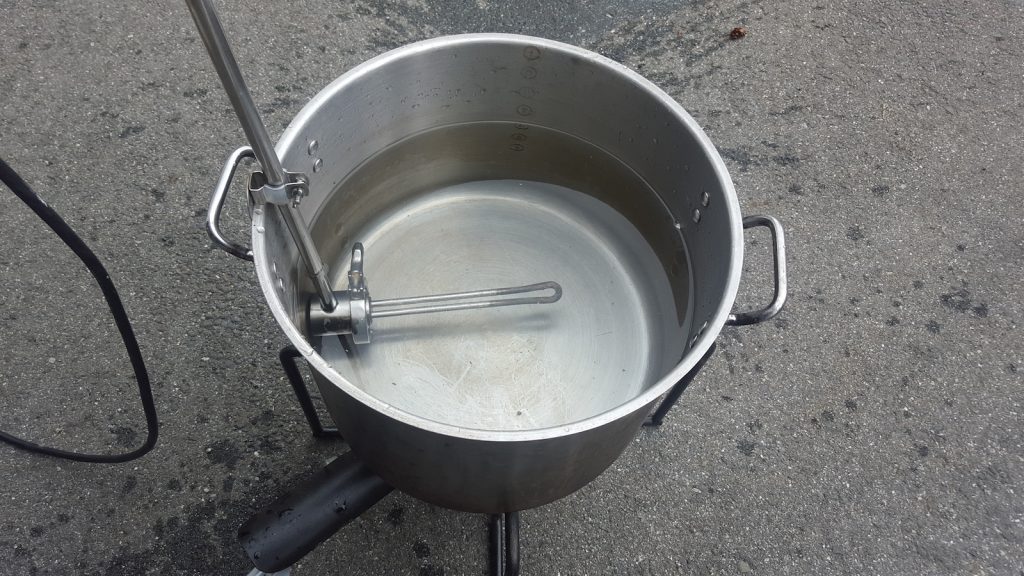
While the water was warming up, I weighed out and milled the grains.
With the water at strike temperature, I lowered the BIAB bag full of grains into the water, gave it a gentle stir, then checked to ensure it was at my target mash temperature.
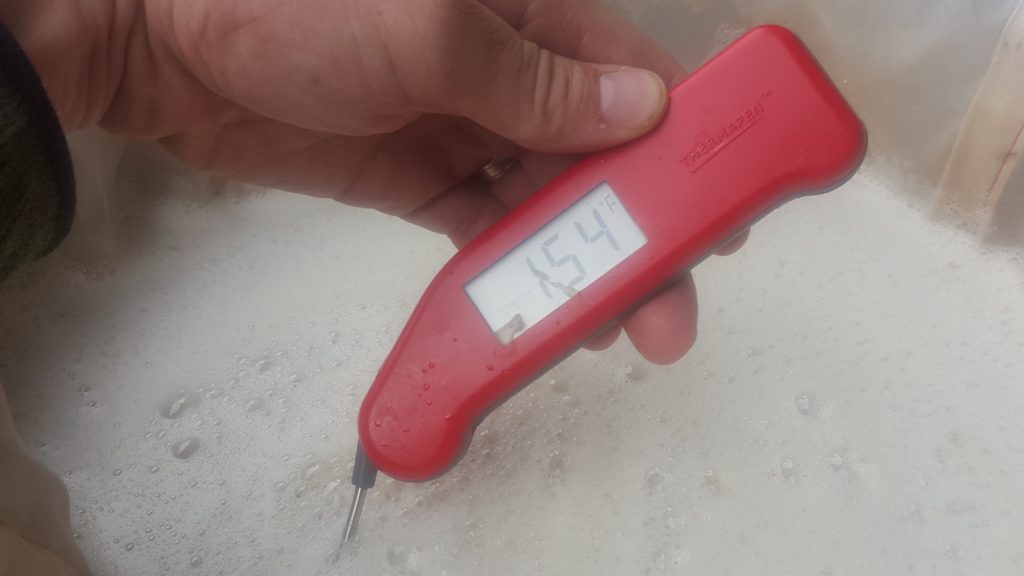
After a 60 minute rest, I removed the grain bag and brought the wort to a boil, during which I added hops as outlined in the recipe.
When the 60 minute boil was complete, I turned off the heat and quickly chilled the wort to my desired fermentation temperature of 66°F/19°C.
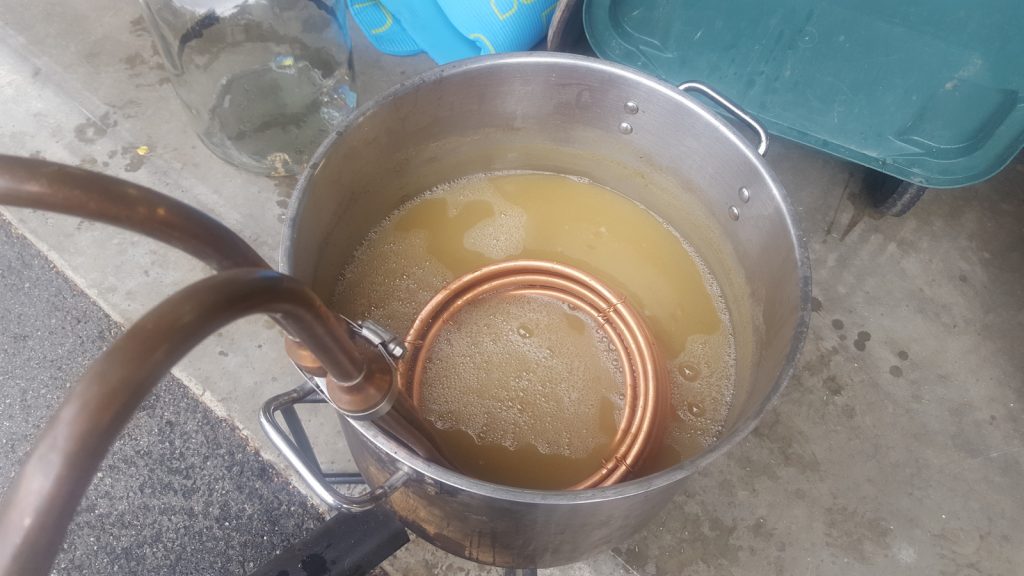
A refractometer reading at this point showed the wort was right at my intended OG.
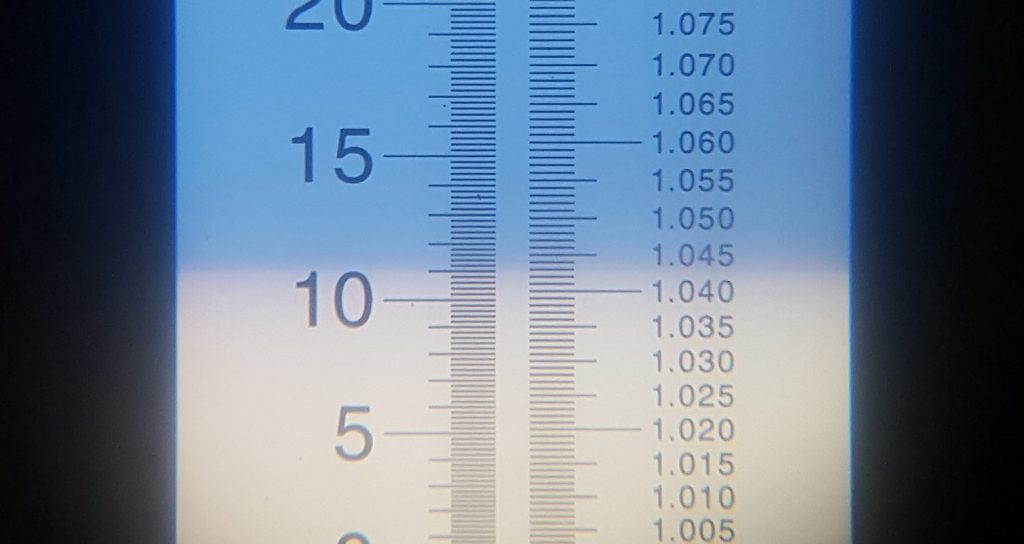
I transferred the chilled wort to a 6.5 gallon glass carboy, moved it to an area that maintains a steady temperature, and pitched the yeast. Less than 24 hours later, a thick kräusen and airlock activity indicated fermentation had taken off.
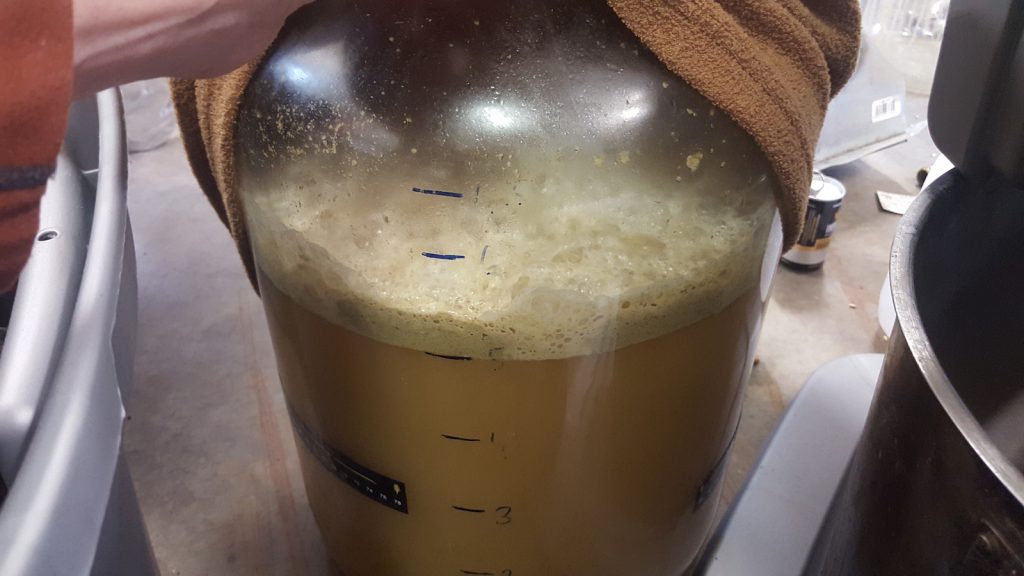
When fermentation began to slow a few days later, I added the dry hop charge.
I took a hydrometer measurement 3 days later that showed FG had been reached.
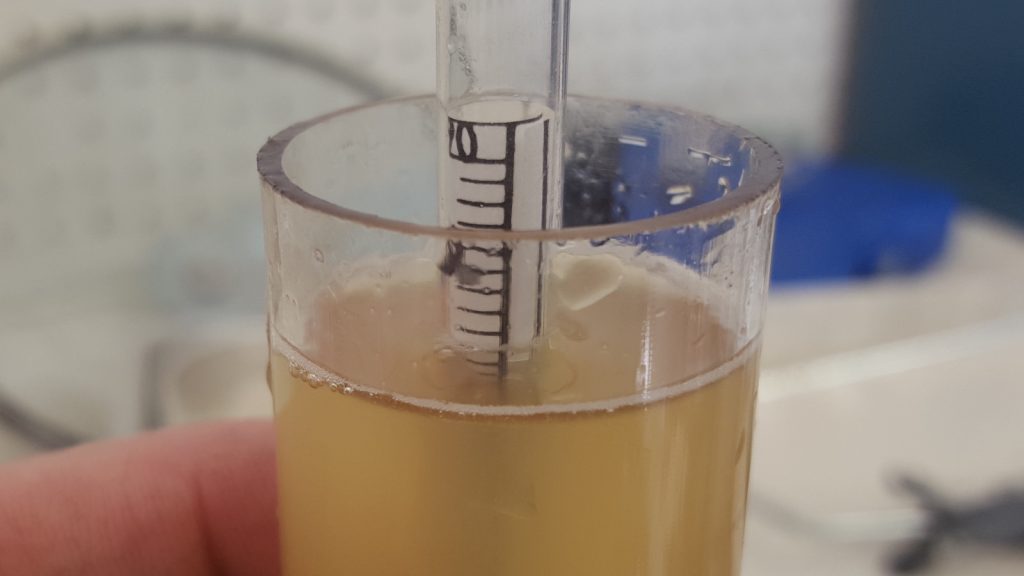
At this point, I proceeded with transferring the beer to a sanitized and CO2 purged keg.
The filled keg was placed in my cool keezer where it was fined with gelatin and burst carbonated briefly before I reduced the gas to serving pressure. After a week of conditioning, it was carbonated, clear, and ready to serve.
| RESULTS |
A total of 20 people participated in the evaluation of this beer, all blind to the hop variety used until after they completed the survey. The average aroma and flavor ratings for each descriptor were plotted on a radar graph.
Average Ratings of Aroma and Flavor Perceptions
The 3 characteristics endorsed as being most prominent by participants:
| Aroma | Flavor |
| Tropical Fruit | Citrus |
| Citrus | Floral |
| Floral | Pine |
The 3 characteristics endorsed as being least prominent by participants:
| Aroma | Flavor |
| Onion/Garlic | Onion/Garlic |
| Dank/Catty | Berry |
| Resinous | Apple/Pear |
Participants were then asked to rate the pungency of the overall hop character.
Next, they were instructed to identify beer styles they thought the hop would work well in.
Finally, tasters were asked to rate how much they enjoyed the hop character on a 0 to 10 scale.
My Impressions: I was stunned by how different this beer smelled compared to how it tasted. I perceived minimal citrus in the aroma with bright tropical fruit flavors and a spicy, grassy bitterness that lingered for a bit after each sip. While not unpleasant, it wasn’t the type of bitterness I felt would compliment a modern NEIPA, though it worked well in this lighter Pale Ale.
| CONCLUSION |
Reviewing Melba’s stats, I noticed it has a cohumulone level upwards of 35%, similar to Chinook, a variety known to impart a sharper, more harsh bitterness. Considering the significant results of our xBmt on this topic, I’m compelled to think the bitterness I perceived in the single hopped Melba beer may have been a function of its cohumulone content. Perhaps this is what’s meant by descriptions of Melba as imparting a “spicy bitterness.” Interestingly, participants seemed to perceive aromatic characteristics of the beer a bit differently than the flavor, with descriptors such as earthy/woody, spicy/herbal, and resinous being more noticeable on the palate than the nose. This aligns well with my experience of the beer as possessing a rather fruity aroma followed quite unexpectedly by a spicy, piney, earthy flavor.
The tropical fruit, citrus, and stone fruit aromas Melba imparted had me thinking it’d be a great variety to use in a hoppy NEIPA. While it is described as being similar to Galaxy, the aroma and flavor characteristics were quite different from what I’ve experienced with that variety. And that’s okay, there’s nothing wrong with having another unique hop available! I look forward to trying Melba in conjunction with other varieties and have a feeling it’ll quickly rise in popularity once brewers realize its potential.
Melba hops are currently available in 2 oz, 8 oz, and 16 oz packages at Yakima Valley Hops. If you have any thoughts on this variety, please share them in the comments section below!
Support for this edition of The Hop Chronicles comes from Hopsteiner, a leading grower, trader, and processor of high quality beer hops since 1845.
Support Brülosophy In Style!
All designs are available in various colors and sizes on Amazon!
Follow Brülosophy on:
FACEBOOK | TWITTER | INSTAGRAM
If you enjoy this stuff and feel compelled to support Brulosophy.com, please check out the Support Us page for details on how you can very easily do so. Thanks!


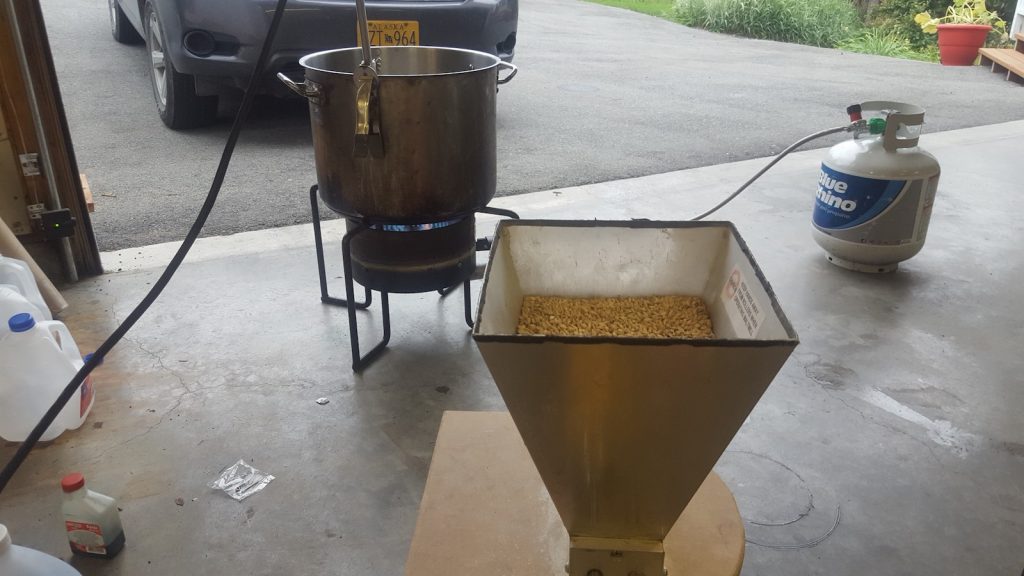
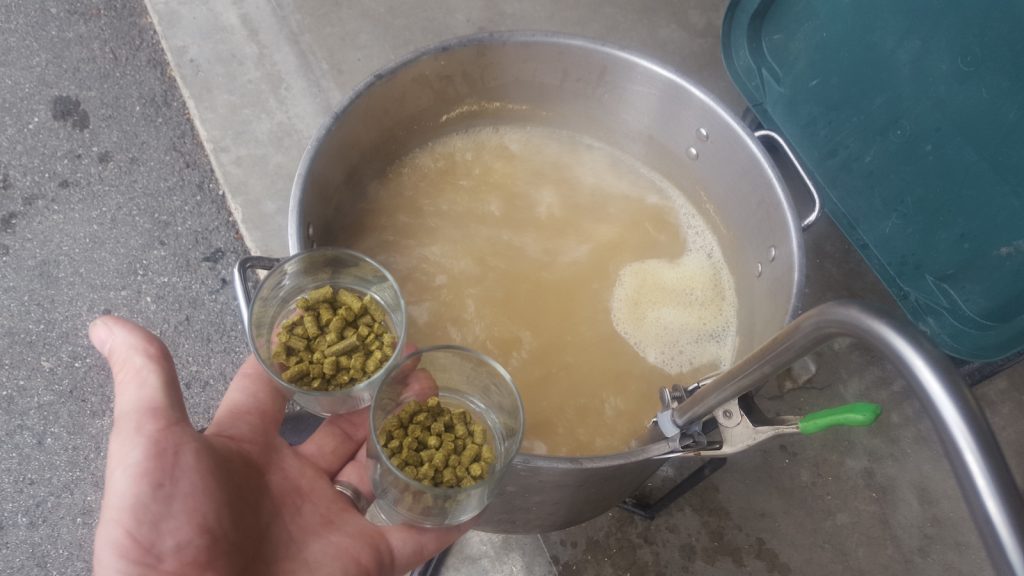
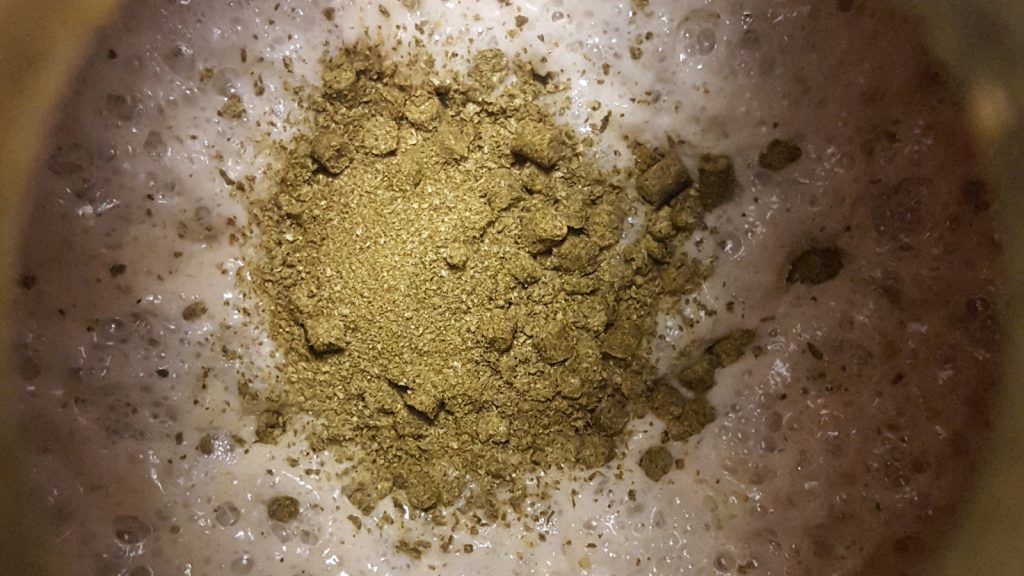
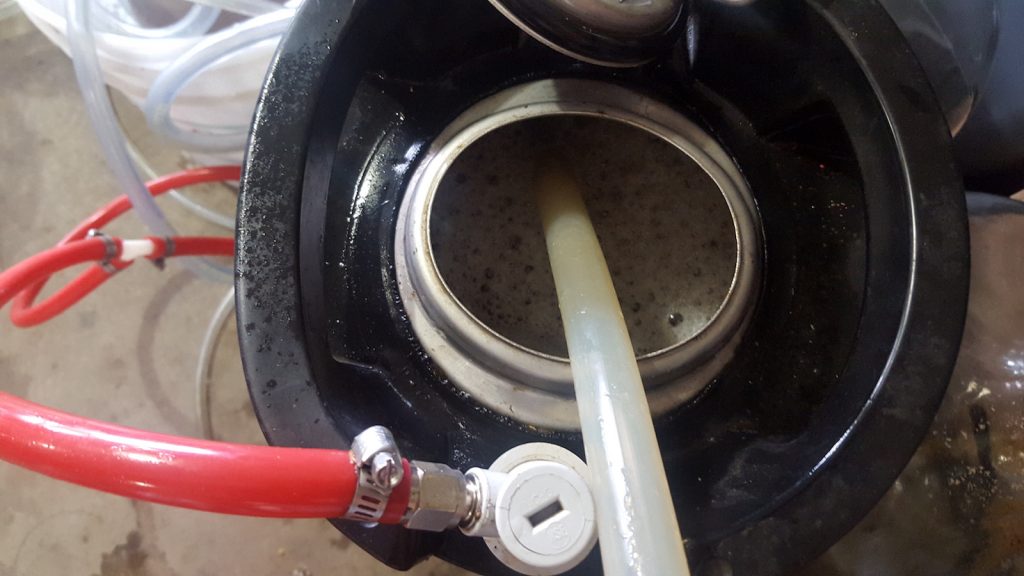
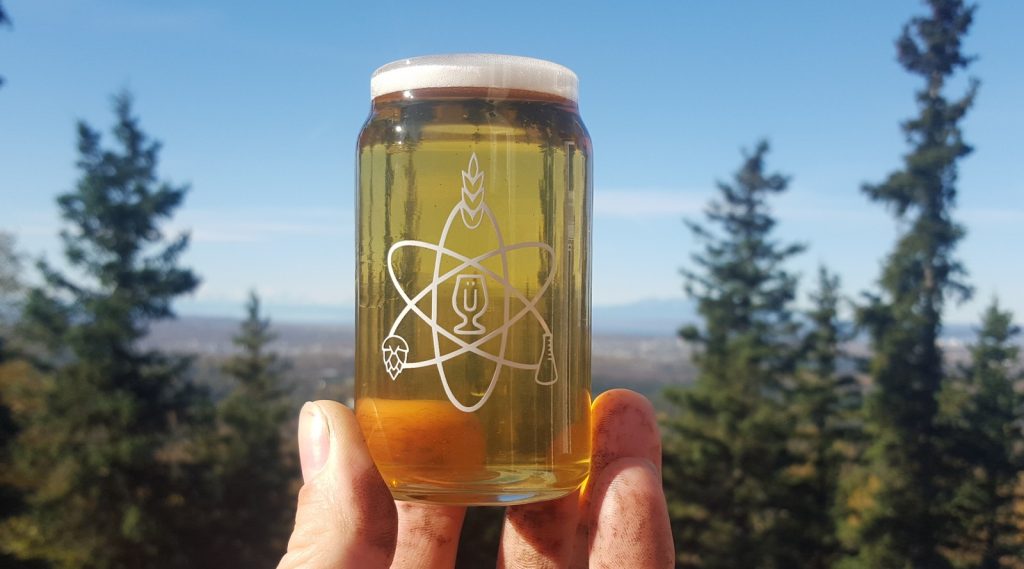
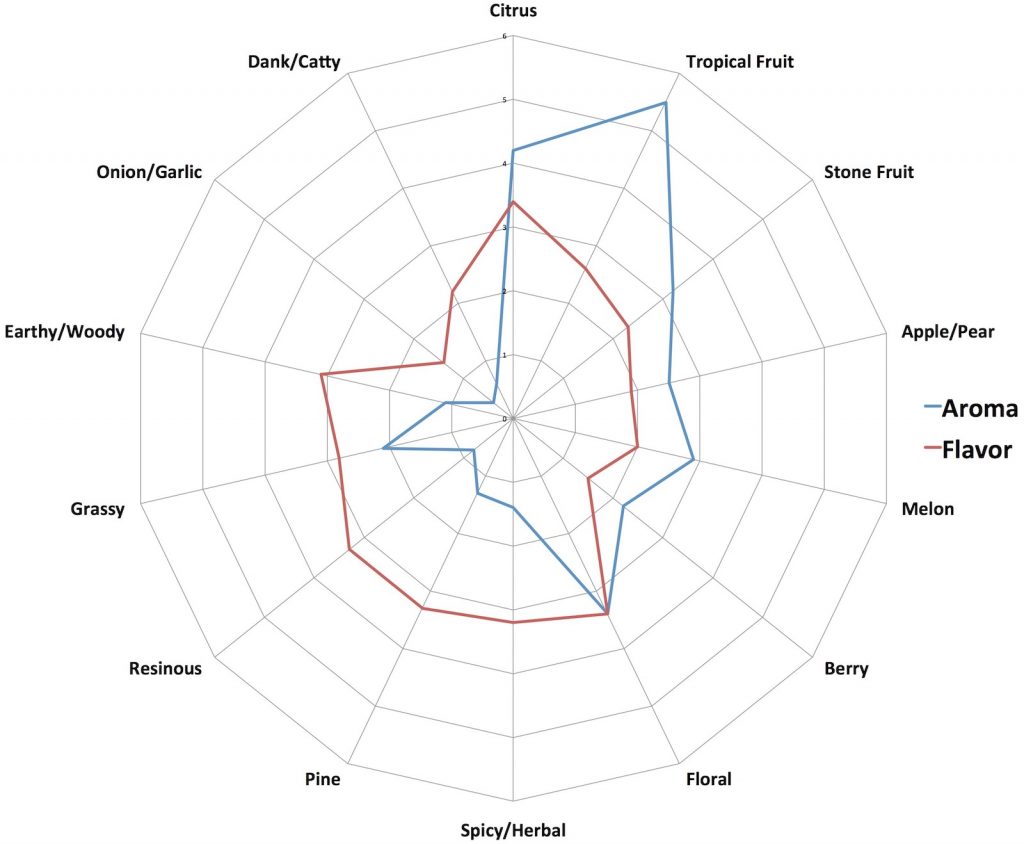
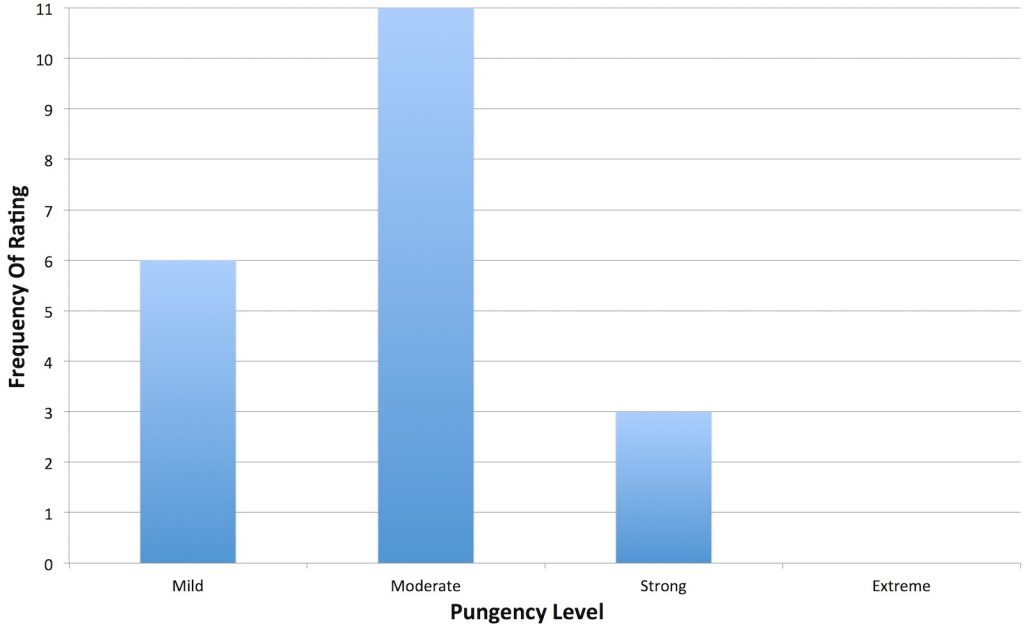
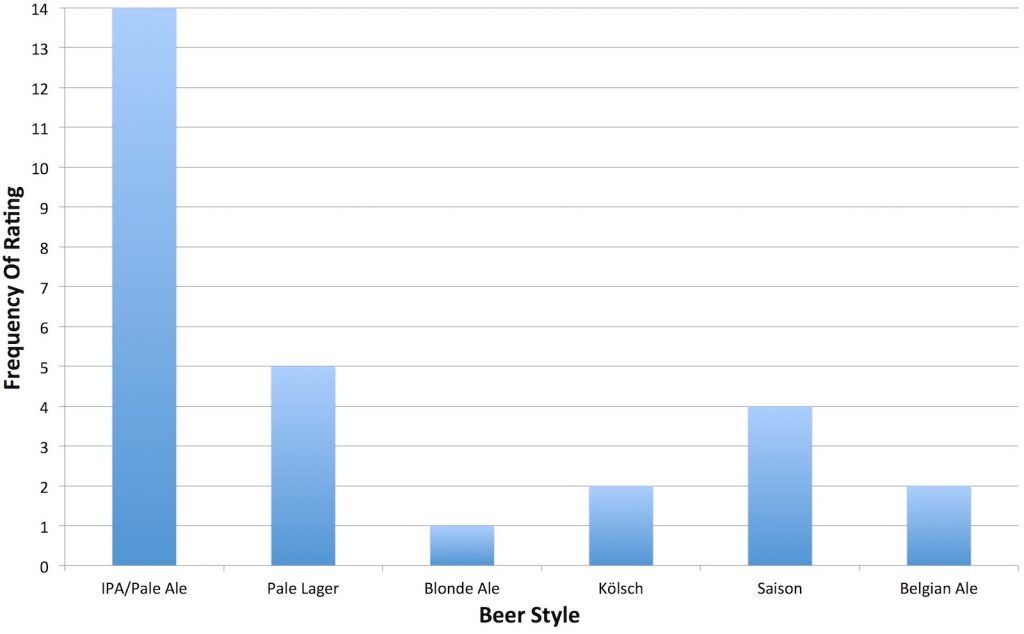
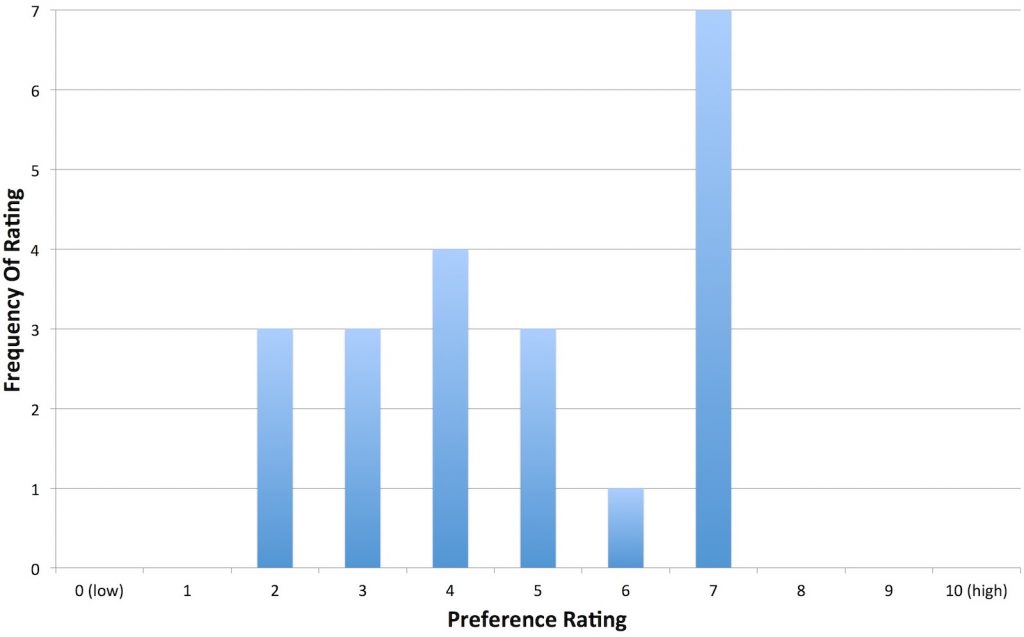










7 thoughts on “The Hop Chronicles | Melba (2016) Pale Ale”
I’m too lazy to go back and look, but it seems like every single hop chronicle has “pale ale/IPA” as the style everyone thinks each hop best suits. Maybe you should ask different questions to get a more meaningful answer.
Go back and check. Every time they’ve used a different style people whine that it should’ve been an IPA or pale ale to highlight the hops.
I feel like I’ve seen at least one that people thought would be better for English mild or Belgian or something (I’m also too lazy to go back and look).
That being said, based only on the descriptions of the hops, I tend to age that they sound most suited to pales and IPAs. Maybe this is simply a function of using modern hop varieties, which seem to be bred for IPAs?
I thought this too at first, but I looked through a while back. Most have IPA, but there’s quite a few that have a second style that ranks pretty highly. Nugget had english ale as a primary, Saaz had pale lager as the second choice, Willamette had lager as the first, etc. Probably 80% IPA/pale as the top choice.
Kind of blew me away seeing how many of these have been done, there’s 14 this year and it’s not even over. Only about 100 more varieties to go, should be done in about 5 years!
“Water Profile: Yellow Bitter in Bru’n Water Spreadsheet”
Bru’n Water’s latest ‘supporter’ version no longer carries a ‘Yellow Bitter’ profile.
‘Yellow Full’, ‘Yellow Balanced’, and ‘Yellow Dry’ profiles but no ‘Yellow Bitter.’
Surprised Brulosophy isn’t using the ‘supporter’ version of Martin’s shareware.
Hi Herb! Apologies, it should read “yellow balanced”, looks like it was from the template we use. I’ll see what we can do to get that fixed.
Melba water profile was done on the supported version of Bru’n water. Cheers!
Thanks Brian to share your experience with us. I also bought this hops and I am now impatient to try it 😉